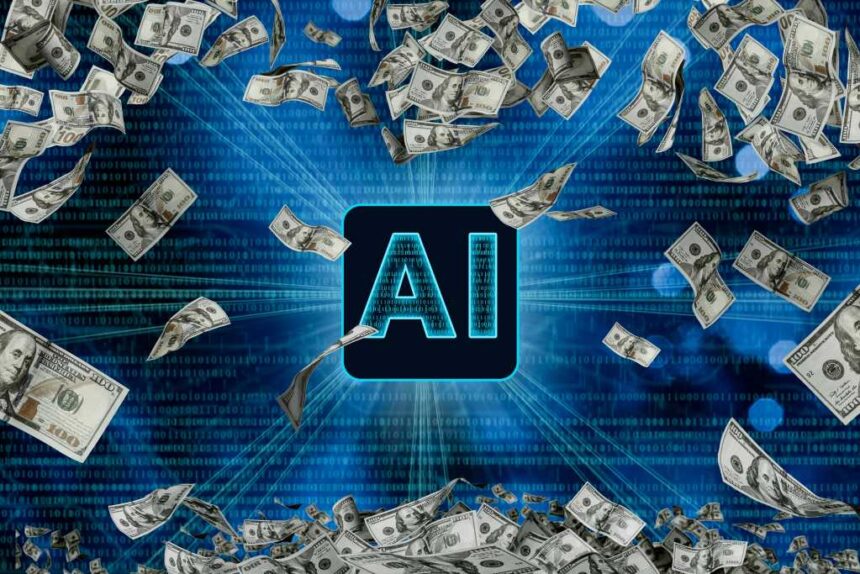As much as enterprise IT executives complain today about the sky-high cost of generative AI (genAI) model access, some fear those costs will skyrocket in the next couple of years.
Why? The theory is that the large language model (LLM) makers will wait until their code has become such an integral part of the enterprise environment that unraveling it and starting over with a different model will be cost-prohibitive. Once that happens, genAI firms will pretty much have their customers over an LLM barrel.
Manuel Kistner, the CEO of software development group New Gravity, recently wrote on LinkedIn about those potential genAI price hikes.
“Remember when Uber rides cost $3 across town? When they threw promo codes at us like confetti? Venture capital was bleeding money to get us addicted to convenience. Then the subsidies stopped. That $3 ride became $25, then $100. We were hooked, so we paid. AI is following the exact same playbook, and the signs are everywhere,” Kistner wrote. “Look at enterprise software pricing. Salesforce charges $300/user/month. Adobe Creative Suite went from $50/month to $600/year per license. These companies price based on value delivered, not development costs.”
New, improved — and pricey
Others echo the point. Dev Nag, the CEO of QueryPal, said recent IT industry history suggests that any technology that is sufficiently different — and delivering materially better value — can obliterate pricing expectations.
“When Netscape tried to charge for browsing, Microsoft answered with a free Internet Explorer and the price of web navigation never recovered,” Nag said. “Chrome later cemented the zero-dollar norm. Let’s Encrypt vaporized the certificate market so completely that 300-dollar SSL fees are now folklore. Skype wrecked international-calling tariffs by moving minutes onto IP, flipping the surplus to consumers in a single release cycle. Smartphones then did the same to point-and-shoot cameras, slicing shipments from 109 million units in 2010 to under 2 million in 2023, while photo taking surged. Each case shows that once a digital good can be cloned at near-zero marginal cost, the lion’s share of value sticks to users.”
Aaron Cohen, an AI consultant, offered his own examples. “Think about Amazon. Is shipping for free and not making a profit still happening? No, they changed certain practices,” Cohen said. “Expect different pricing models. Like Uber, expect surge pricing for AI.”
Cohen argued that this problem is almost certainly going to get worse. “As the models get better, the dependency will get worse and the prices will eventually be, well, they are going to be stuck with a very large bill,” he said.
The sad reality is that there are two mostly unrelated issues going on here, both of which could deliver even more stratospheric genAI price issues for very different reasons.
The old vendor lock-in game
The first issue is good, old-fashioned vendor lock-in. GenAI companies are pushing these models globally, urging every business unit to use it in a variety of ways. Let’s say an enterprise has mainly invested in a language model from just one company, say, maybe AWS, Google or OpenAI. Imagine how disruptive and expensive it would be to reverse that decision in two years if prices rise. (And since most companies are already using multiple models, doesn’t that make tossing everything overboard if prices jump even more complicated?)
The second issue is value pricing, where model makers start to charge based on the value delivered.
Some have argued that any big price increase won’t happen — at least not to an overly painful extent — because of the large number of genAI competitors. That might be true now, but it won’t be true forever. GenAI consolidation is inevitable. Still, even consolidation will likely leave a good handful of viable players.
But the competition factor only influences the second issue, the value pricing one. It does nothing to help a company that went almost all-in on one model maker.
The vendor lock-in is more than end users relying on a model and the code being deeply embedded in your systems. Your team will have by then spent a massive amount of money fine-tuning those models and feeding it your company-specific data.
That combination is likely to mean vendor lock-in. But there are steps companies can take now to reduce the chance that any one genAI firm could soon hold you hostage for whatever price hike they feel like imposing.
“It’s similar to what the old mainframe timeshare model was in that they are renting not owning. [IT is] literally stuck paying token charges in perpetuity. It’s absolutely insane,” said Stephen Klein, CEO of Curiouser.AI. “It would be just as easy to implement an agnostic, multi-LLM model or, even better, open source [option] that (IT) can own. The problem is that open source is kind of like buying furniture from Ikea. It needs assembly and fine tuning.”
Klein’s point is valid, but enterprises are already doing a lot of assembly and fine tuning. That is a big part of what is going to create the lock-in problem.
Could competition keep prices in check?
Not everyone fears big price hikes. Take James Villarrubia, for example. Until May 30, Villarrubia was a head of NASA digital innovation and AI, serving as a presidential innovation fellow for a NASA unit called the Convergent Aeronautics Solutions Project.
Villarrubia said he doesn’t see any upcoming pricing changes as being materially different from what IT experienced in the past. “This does not strike me as any different than the panic we saw during early cloud migration,” Villarrubia said, when feared price hikes never materialized.
One reason he’s sanguine about pricing involves the way many genAI vendors have been interacting with each others’ systems.
Enterprises have been “designing their systems to be linked to tools in the lightest way possible,” Villarrubia said. GenAI vendors “were all so desperate to get in on OpenAI business that they were using an OpenAI-flavored API. That made swapping way cheaper.”
Also, Villarrubia argued, the extensive fine-tuning that enterprises are doing will also not likely lock them into any one model. Most are “going straight to a core model” such as Meta’s LLama 4, Villarrubia said.
“I see the [customized] fine tuning tasks significantly dropped from where it was a year ago,” he said — mostly because Meta made Llama more open, basically telling IT to use it to do model fine-tuning.
“I don’t see a deep monopolistic play yet,” Villarrubia said. “The vendor lock-in is not the thing I see driving up costs. When the new models come out, that is when prices will increase.”
Even then, he doubts price hikes will be unreasonably large because model makers will very much want to encourage upgrades. “It simplifies their architecture,” Villarrubia said.
Some have suggested trying to negotiate longer-term contracts — such as five-year agreements — to avoid exposure to unlimited price hikes. But Villarrubia questions whether that makes business sense.
“A five-year contract seems insane for products that haven’t been on the market for five years yet,” he said.
Read the full article here










